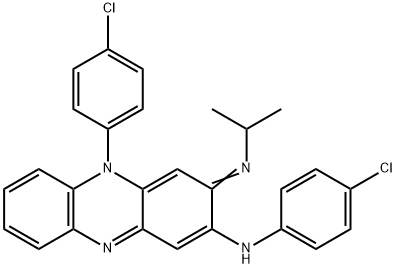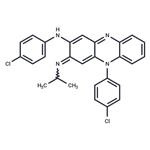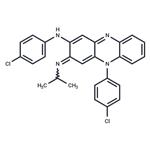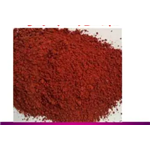
Clofazimine
- Product NameClofazimine
- CAS2030-63-9
- CBNumberCB6273466
- MFC27H22Cl2N4
- MW473.4
- EINECS217-980-2
- MDL NumberMFCD00056793
- MOL File2030-63-9.mol
- MSDS FileSDS
Chemical Properties
| Melting point | 210-212° |
| Boiling point | 616.26°C (rough estimate) |
| Density | 1.1342 (rough estimate) |
| refractive index | 1.6300 (estimate) |
| storage temp. | 2-8°C |
| solubility | Practically insoluble in water, soluble in methylene chloride, very slightly soluble in ethanol (96 per cent). It shows polymorphism (5.9). |
| pka | 8.37; also reported as 8.51(at 25℃) |
| form | Solid |
| color | Yellow to Amber to Dark red |
| Water Solubility | 10mg/L(temperature not stated) |
| Merck | 14,2373 |
| BCS Class | 4/3 |
| FDA UNII | D959AE5USF |
| ATC code | J04BA01 |
| UNSPSC Code | 41116107 |
| NACRES | NA.24 |
Safety
| Symbol(GHS) |

|
|||||||||
| Signal word | Warning | |||||||||
| Hazard statements | H315-H335-H319-H413 | |||||||||
| Precautionary statements | P264-P280-P302+P352-P321-P332+P313-P362-P264-P280-P305+P351+P338-P337+P313P | |||||||||
| Hazard Codes | Xn,Xi | |||||||||
| Risk Statements | 22-36/37/38 | |||||||||
| Safety Statements | 36-26 | |||||||||
| WGK Germany | 3 | |||||||||
| RTECS | SG1578000 | |||||||||
| HS Code | 35040000 | |||||||||
| Toxicity | LD50 orally in mice, rats, and guinea pigs: >4 g/kg (Stenger) | |||||||||
| NFPA 704: |
|



